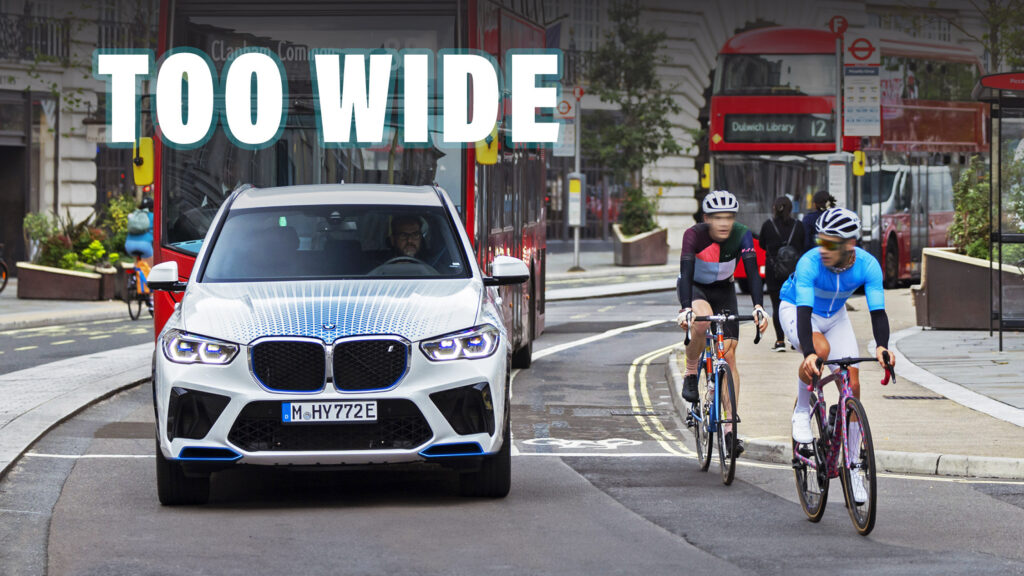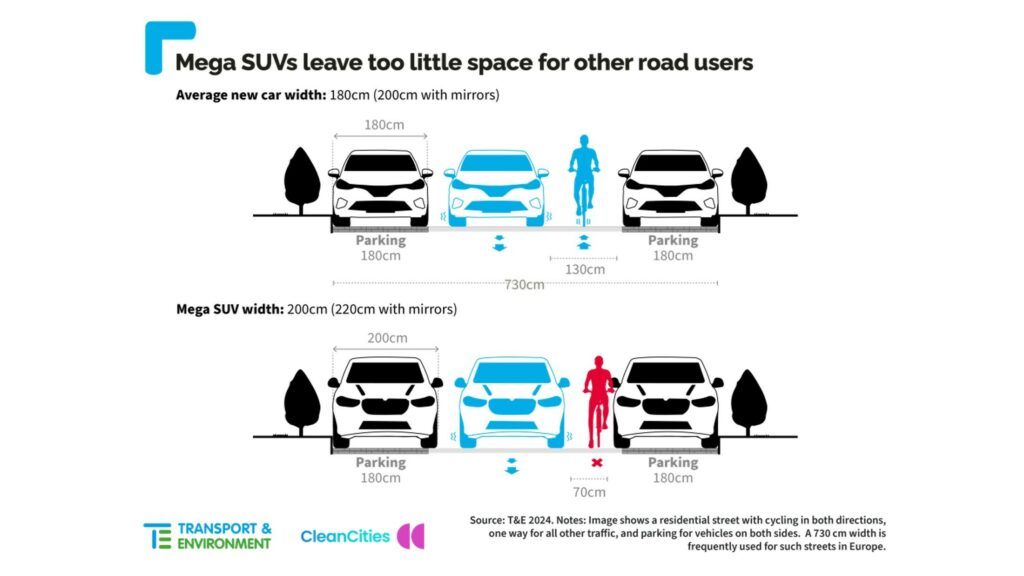Experts call for a regulatory reform in the European Union as the current law permits SUVs and pickups to grow as wide as buses and trucks
January 28, 2024 at 17:20
 –>
–> 
–>
The global SUVs craze shows no signs of abating, steadily growing in popularity. But these hulking chariots aren’t content with mere market dominance; they’re also ballooning in size. While this might not raise an eyebrow in North America, land of the supersized burgers and McMansions, it sparks a different conversation in other parts of the world.
In densely packed European cities, where streets run ribbon-thin and parking is a Tetris puzzle, SUVs’ growing size is causing friction and problems. A recent study has unveiled an interesting tidbit: on average, new passenger vehicles in Europe increase in width by 0.4 inches (1 cm) every two years, encroaching on space that could be utilized by other road users.
Experts warn that without regulatory intervention from the EU, this trend may persist, leading to increasingly crowded and hazardous conditions for pedestrians and cyclists.
advertisement scroll to continue

Currently, the maximum permitted width for all vehicles in the European Union is 255 cm (100.4 inches). This law was enacted in the mid-90s to limit the size of buses and trucks. Today, it acts as a loophole for automakers to produce SUVs and pickups that are too big for European roads and don’t fit in the standard public parking space.
According to a new study by Transport & Environment (T&E), the average width of new cars in the EU has now surpassed 180 cm (70.9 inches), with an average annual growth of 0.2 inches (0.5 cm) since 2001. James Nix, the author of the T&E report, told The Guardian: “That may not sound like a huge figure. But the reality is that – unless there is reform – a cohort of large luxury SUVs and pickups will become as wide as trucks and buses.”
More: Is It Time For Americans To Embrace Smaller Cars?
Narrow roads are a common sight in Europe, and on-street parking doesn’t make things easier. In many cases, parking spots were designed for vehicles that measure up to 180 cm (70.9 inches) in width, which means that approximately half of the new cars on the market today won’t comfortably fit into these spots.

Transport & Environment (T&E)
The study from T&E includes a chart illustrating the impact of large SUVs on a typical street compared to an “average” car. Similar graphics from other sources show the effect larger vehicles have on streets paved in the previous century.
More: The Taller The Hood, The Deadlier The Vehicle For Pedestrians, Study Finds
As you can see in the table below, most large SUVs currently on sale are more than 2,000 mm (78.7 inches) wide. While they are not as wide as your typical American full-size truck, they are still not compatible with many roads in European cities like Paris, London, and Berlin.
The report suggests that lawmakers should review the maximum size of passenger vehicles and LCVs to protect public space from “further encroachment”. Vehicle size – and particularly height – is also crucial for road safety. According to a study conducted by the Vias Institute in Belgium between 2017 and 2021, raising a vehicle’s hood by 10 cm (3.9 inches) increases the risk of fatality in collisions with pedestrians and cyclists by a whopping 30%.
The European Parliament and Council are set to address this issue in early 2024. France has already implemented a program to discourage the use of heavier vehicles, and the cities of Paris and Lyon are considering imposing higher parking fees for larger and heavier vehicles in the coming months.